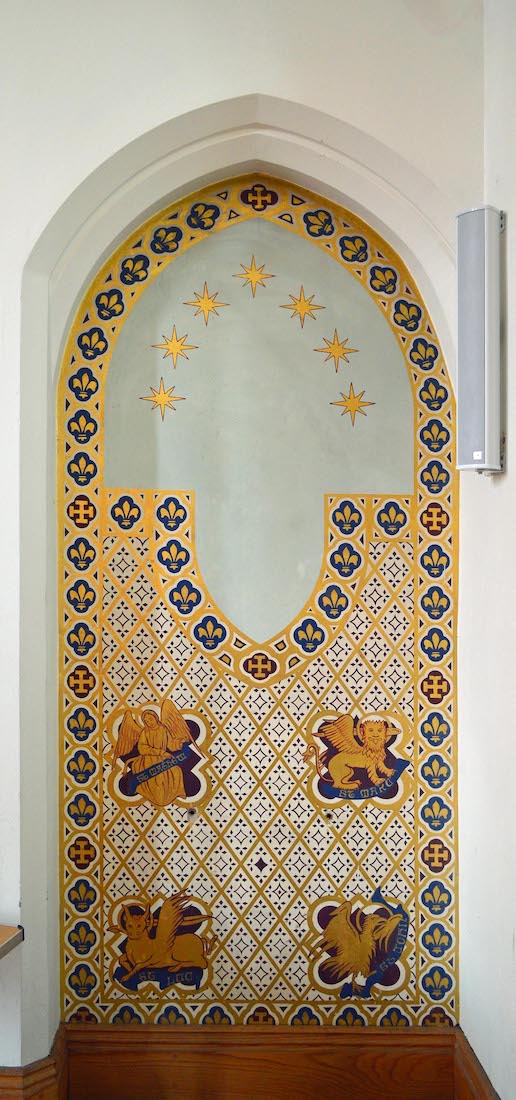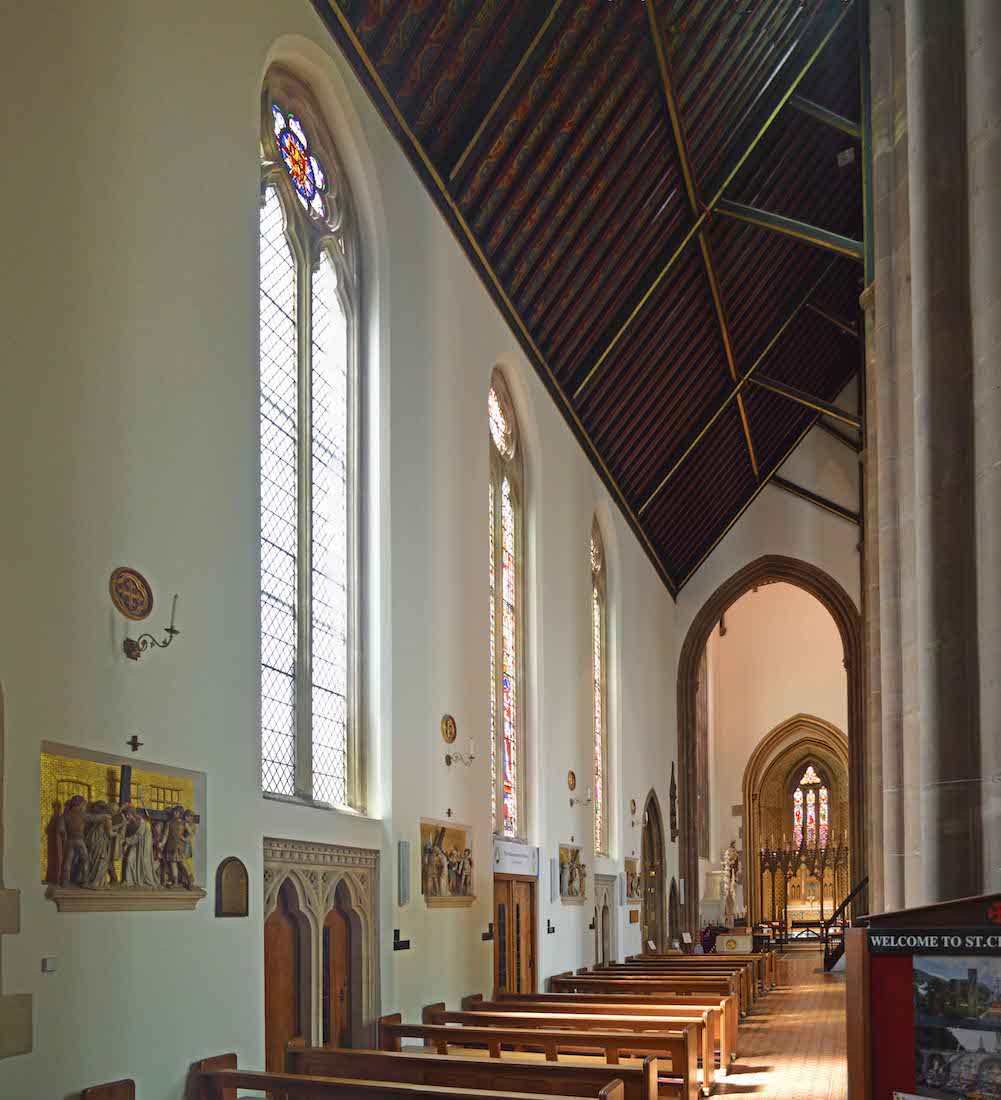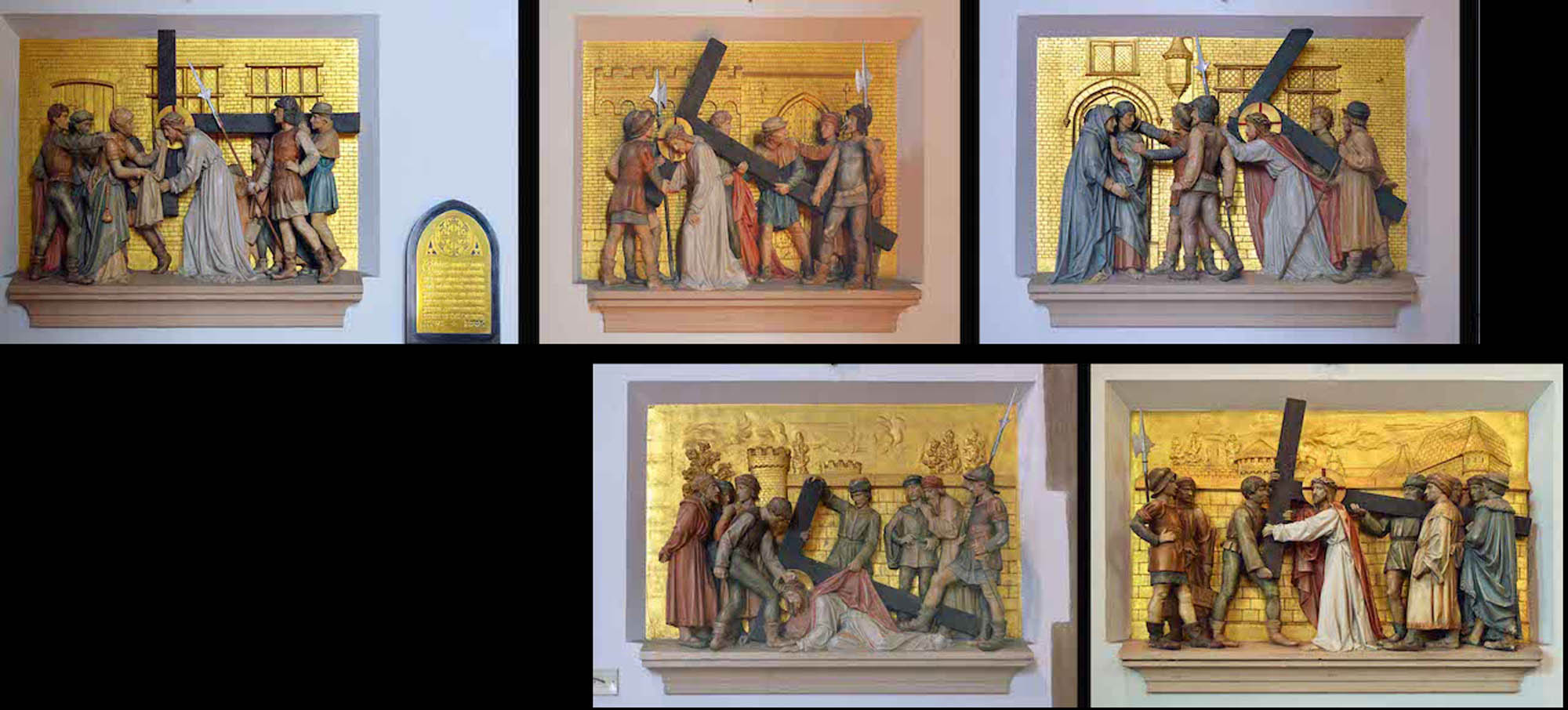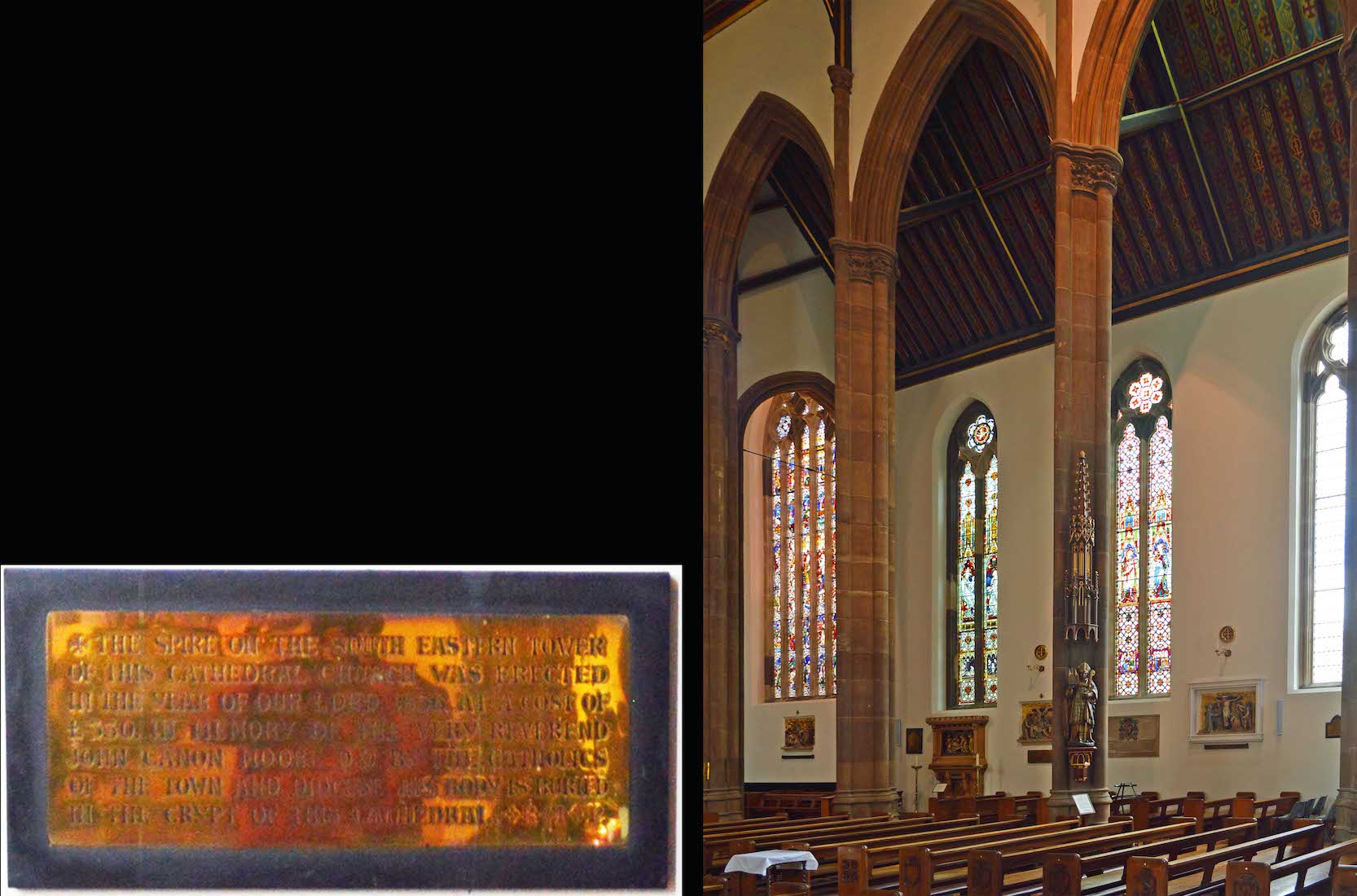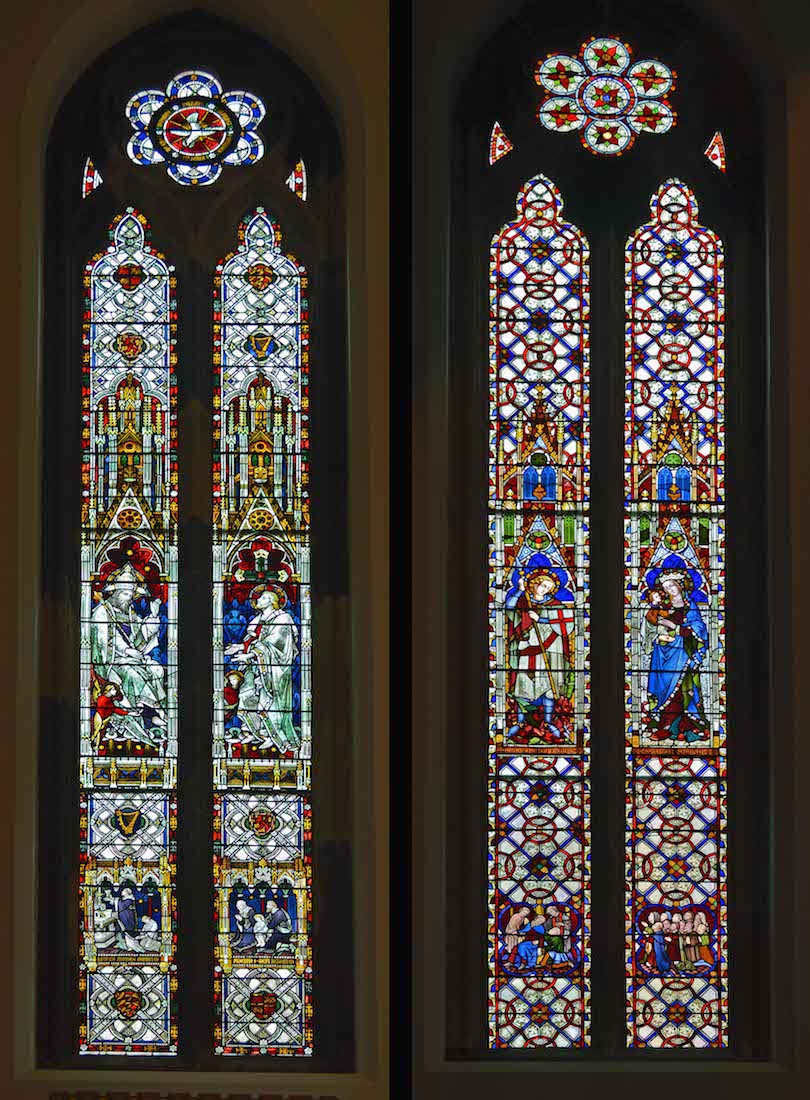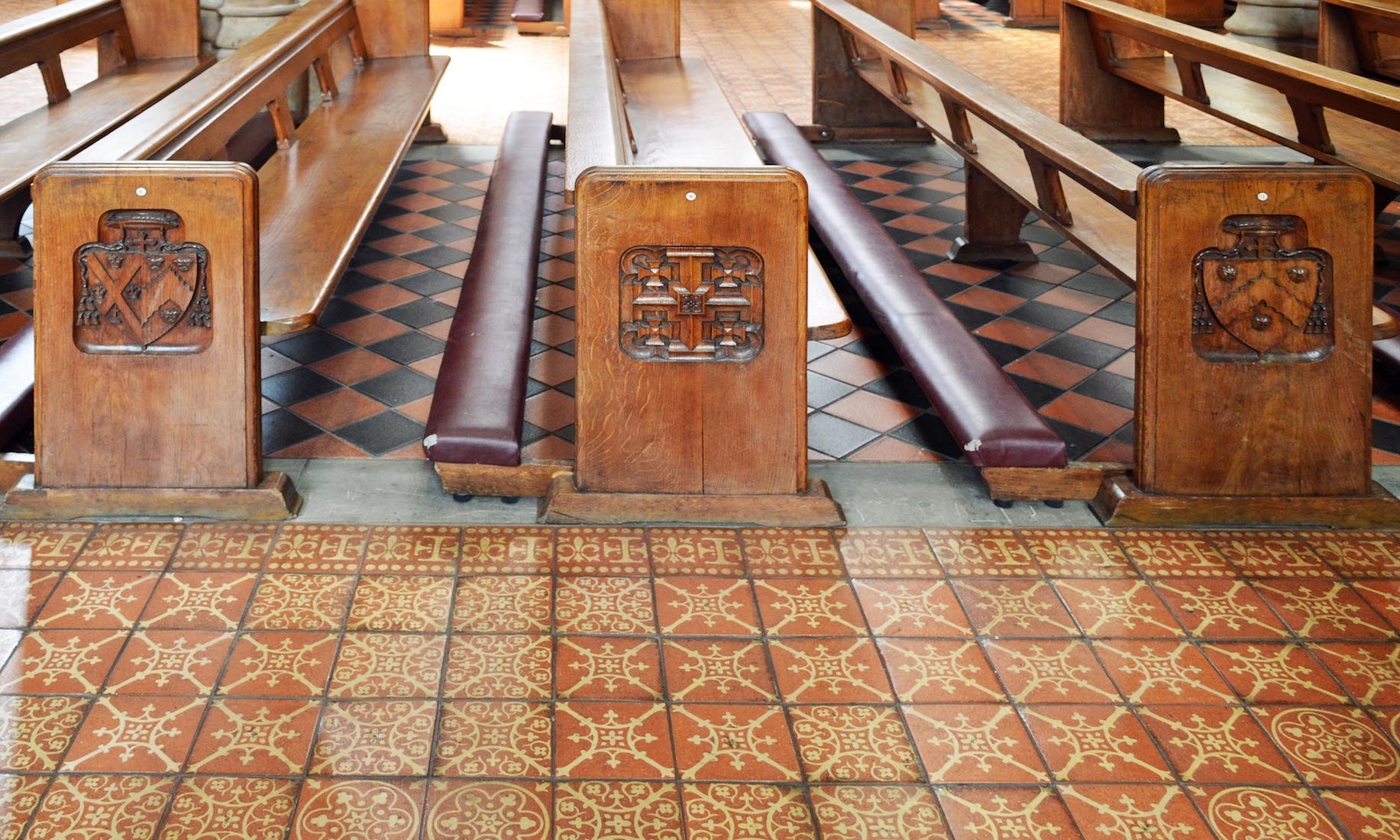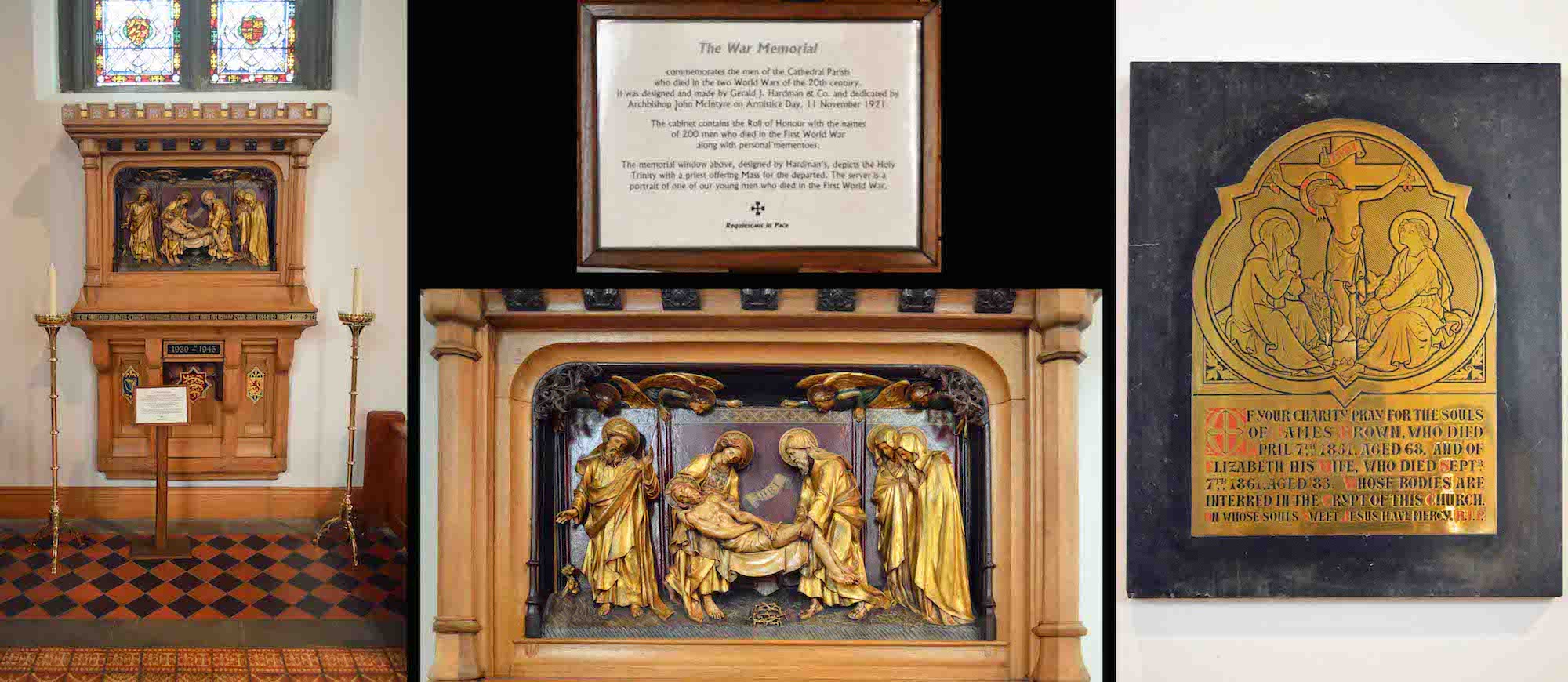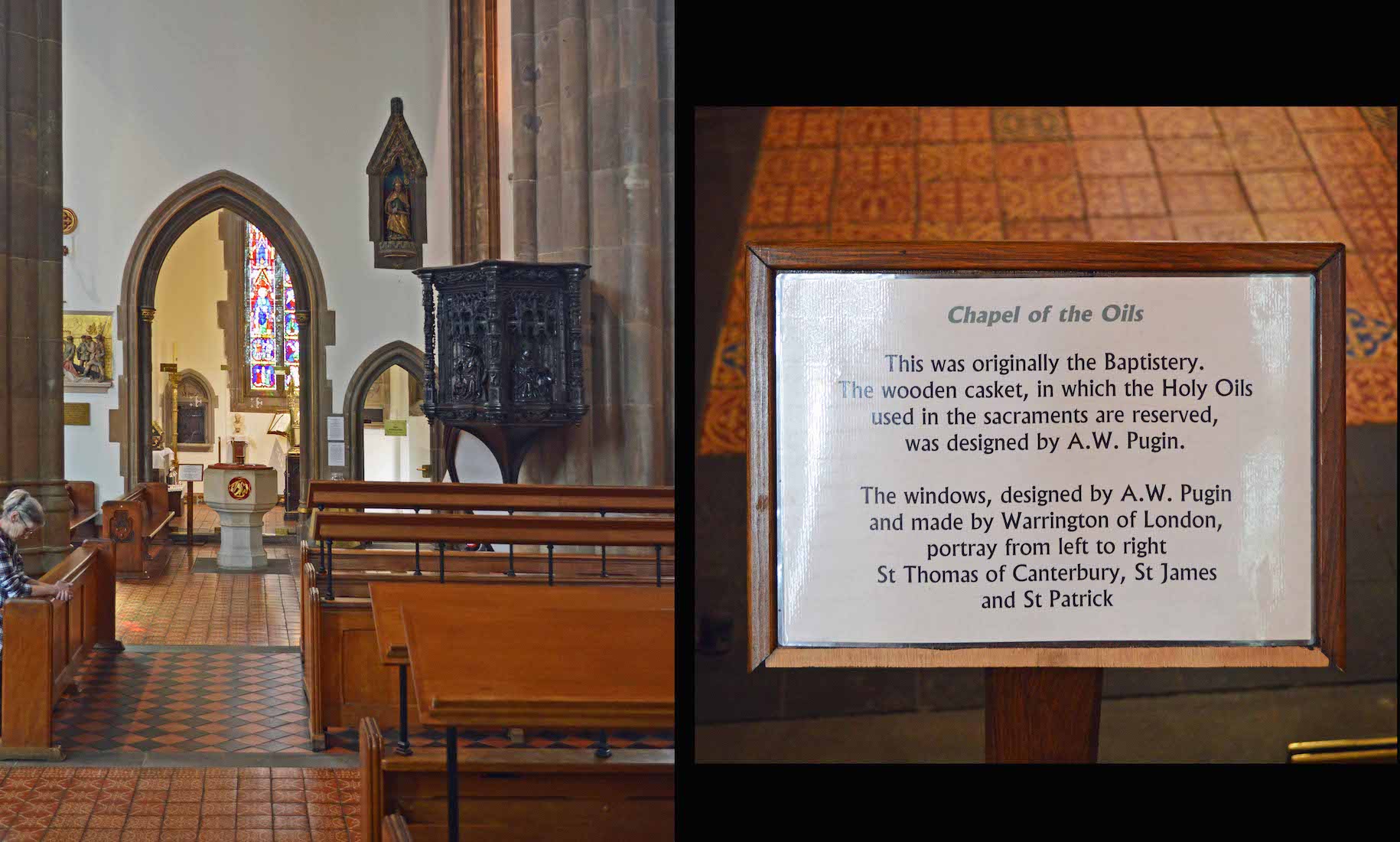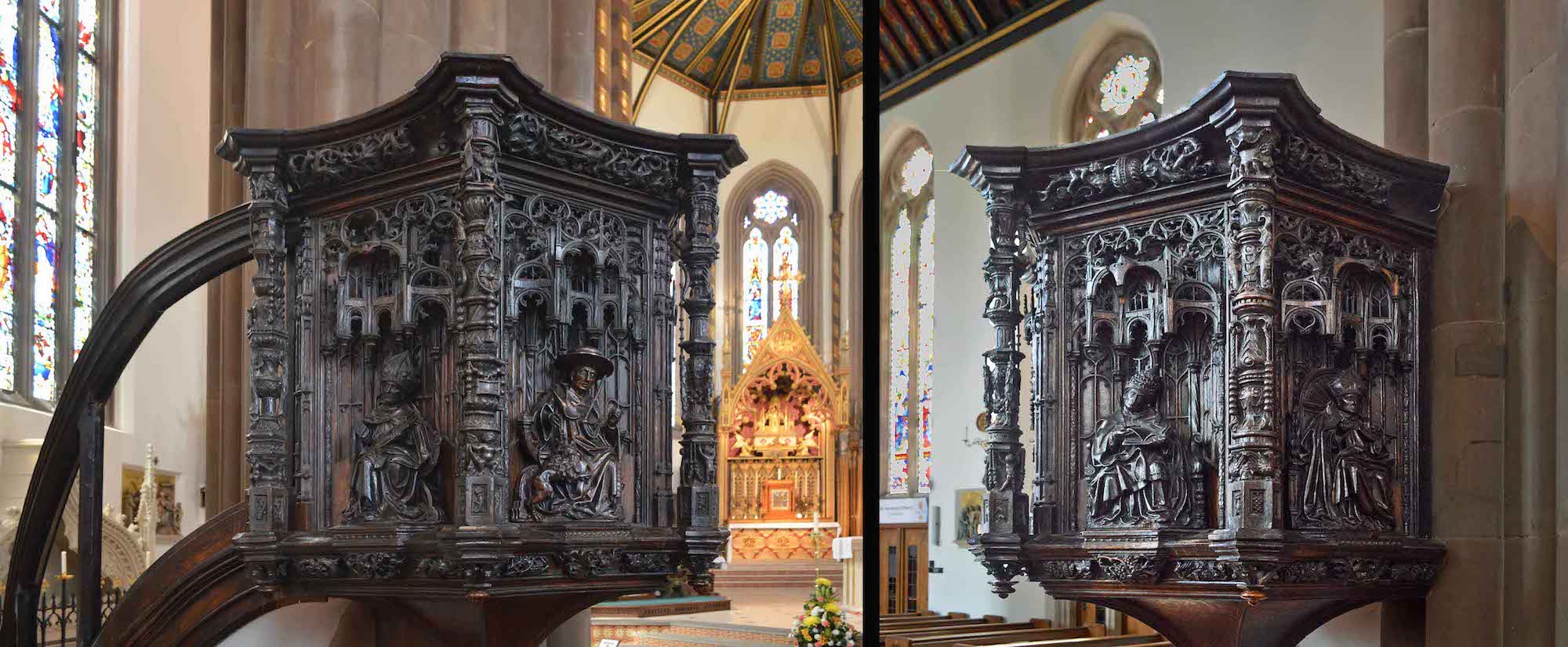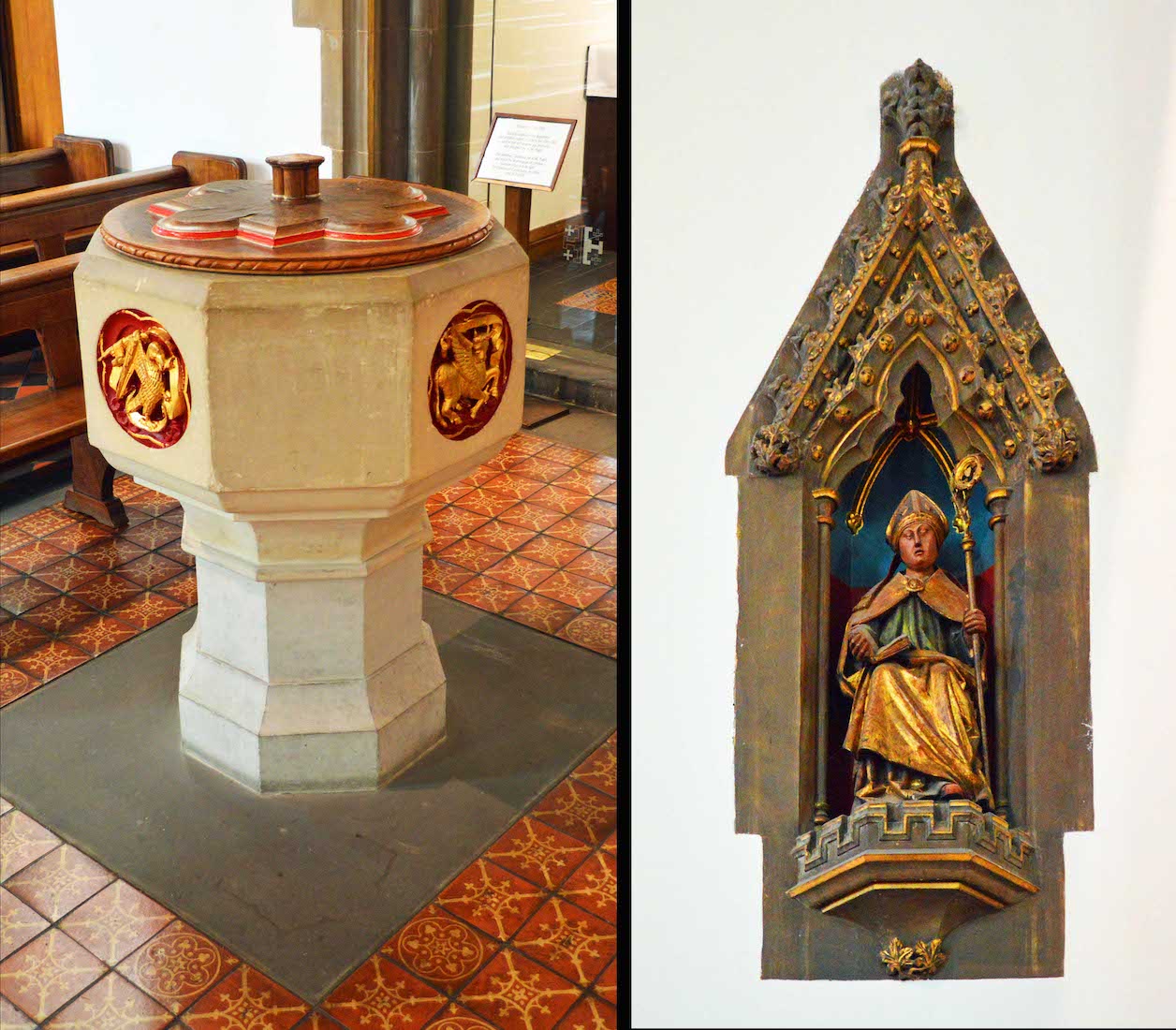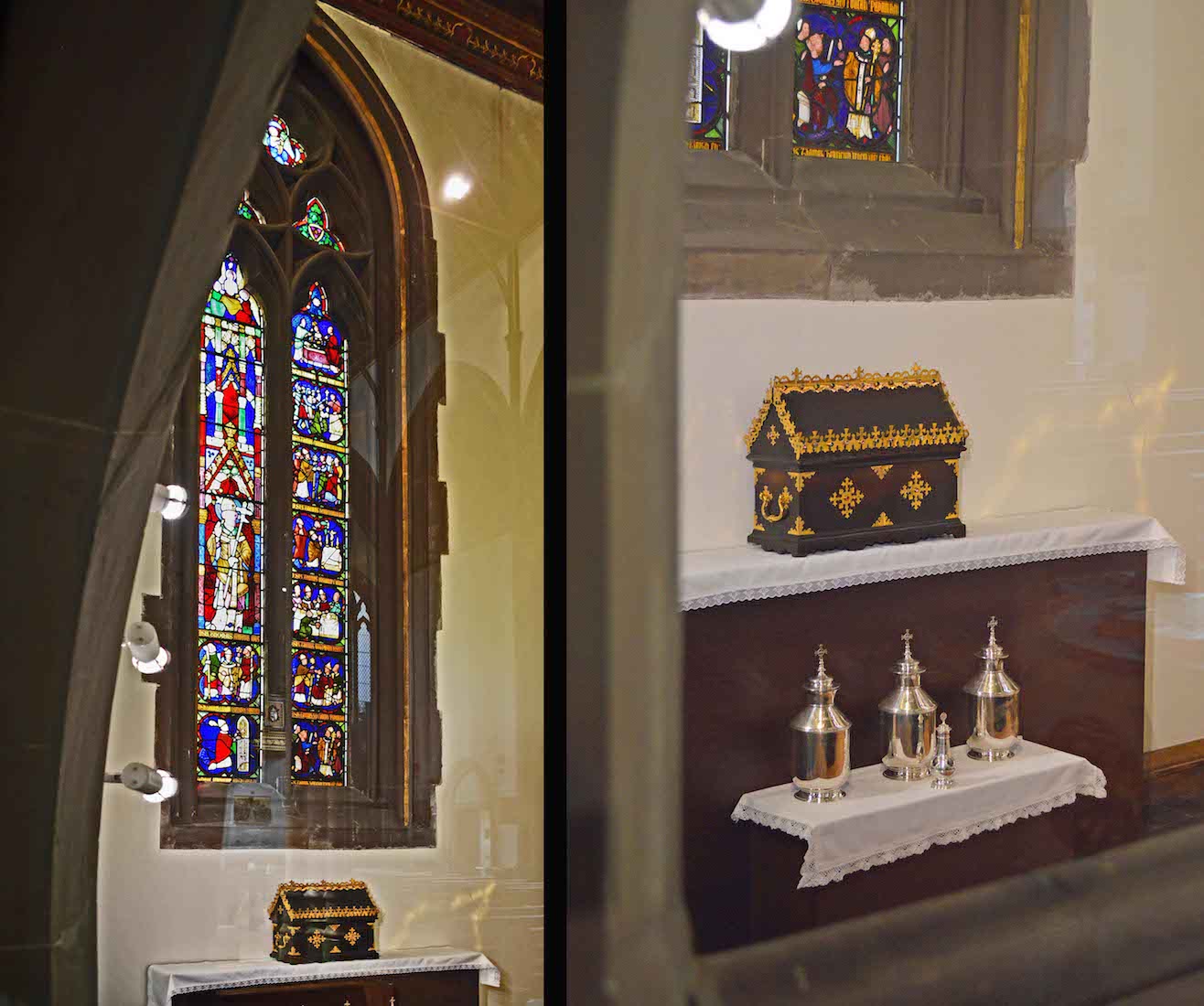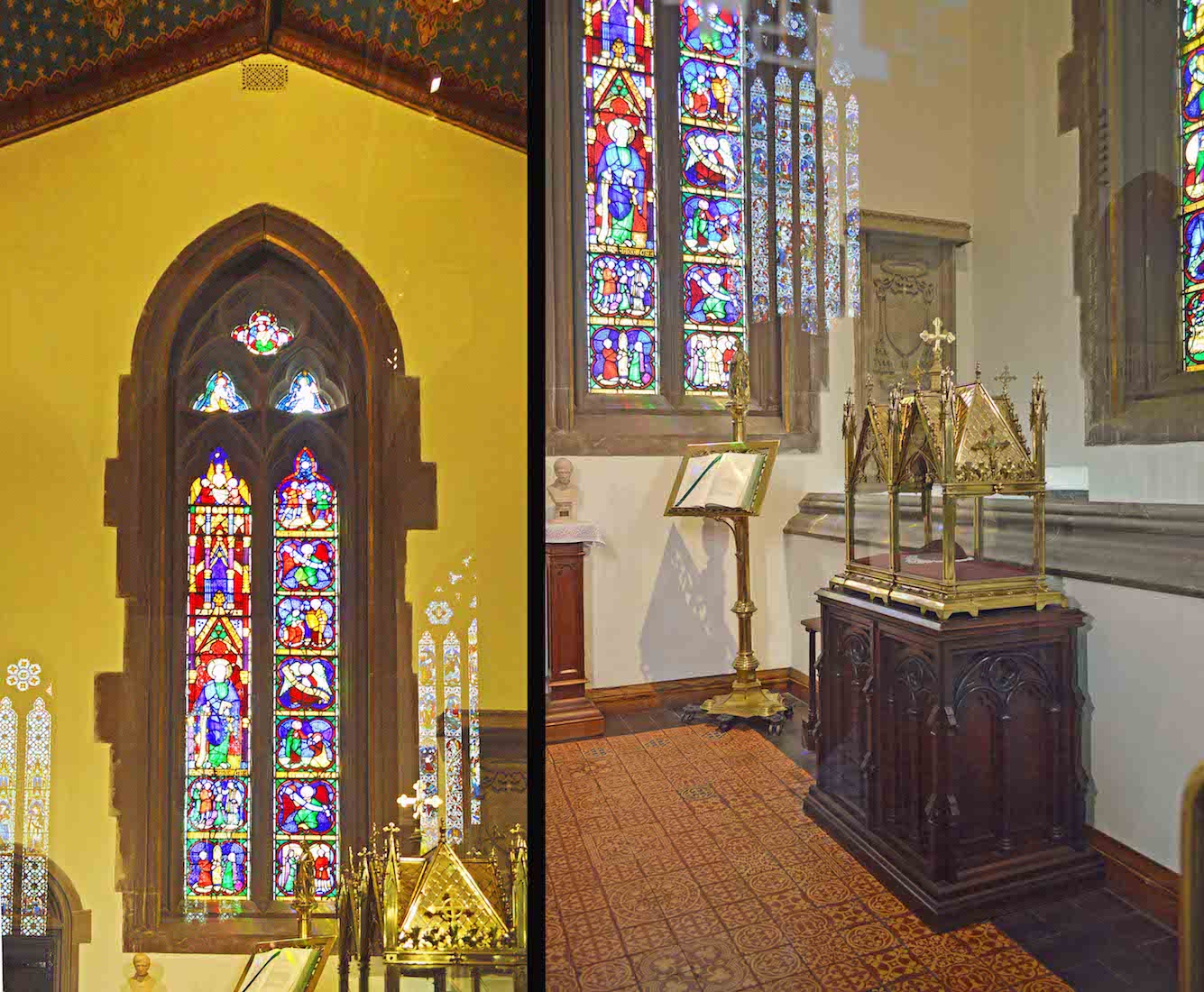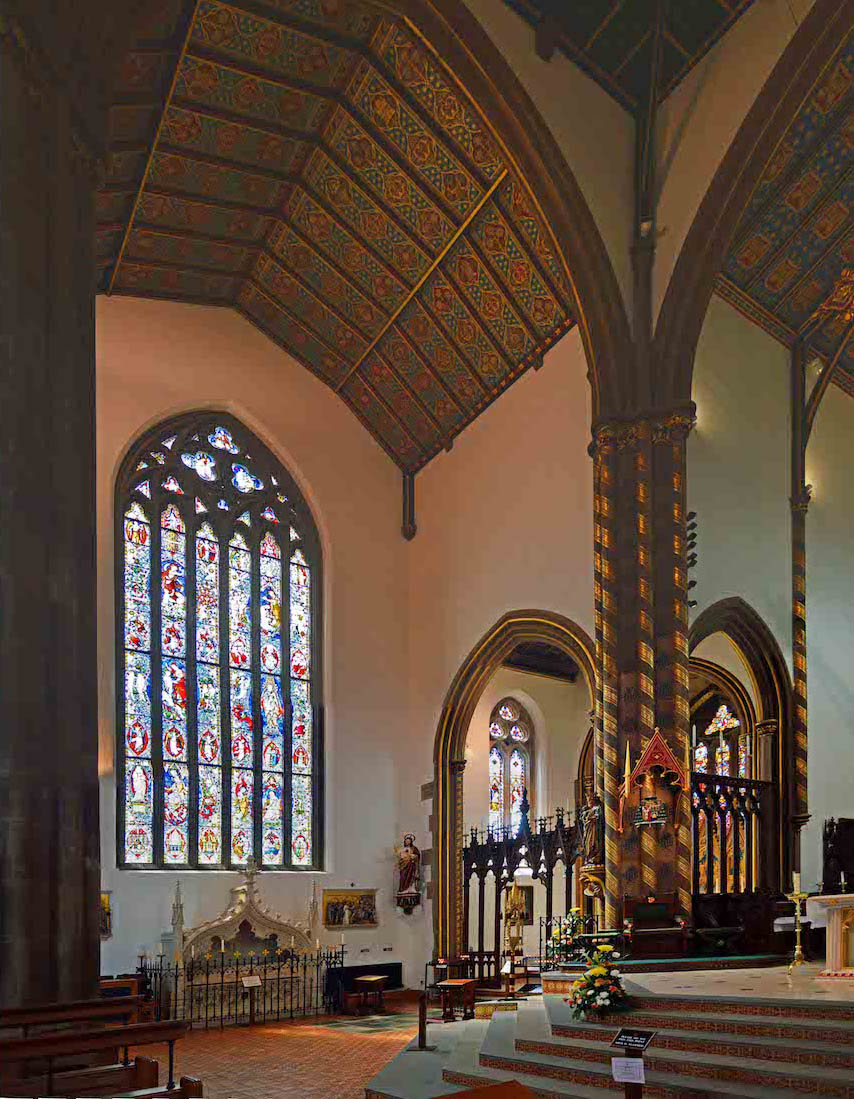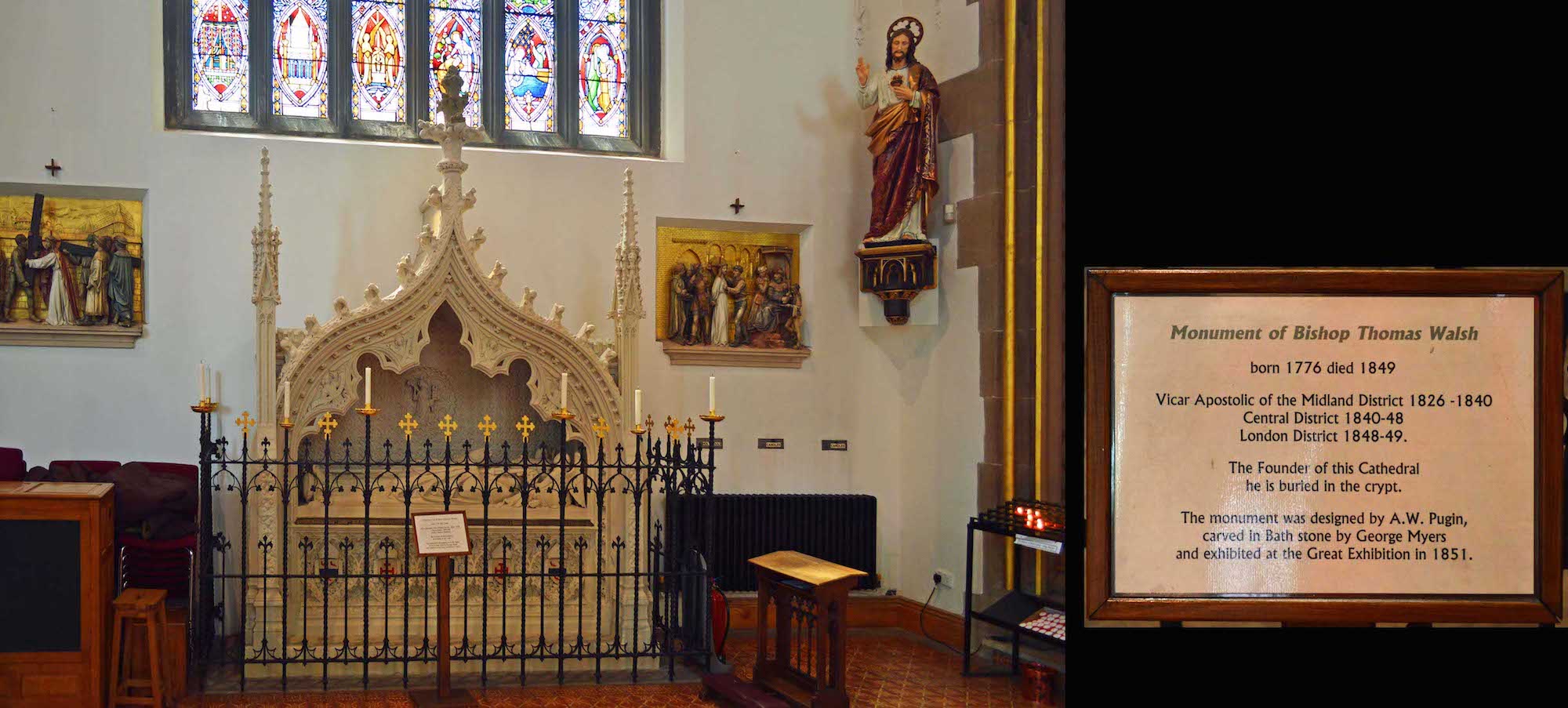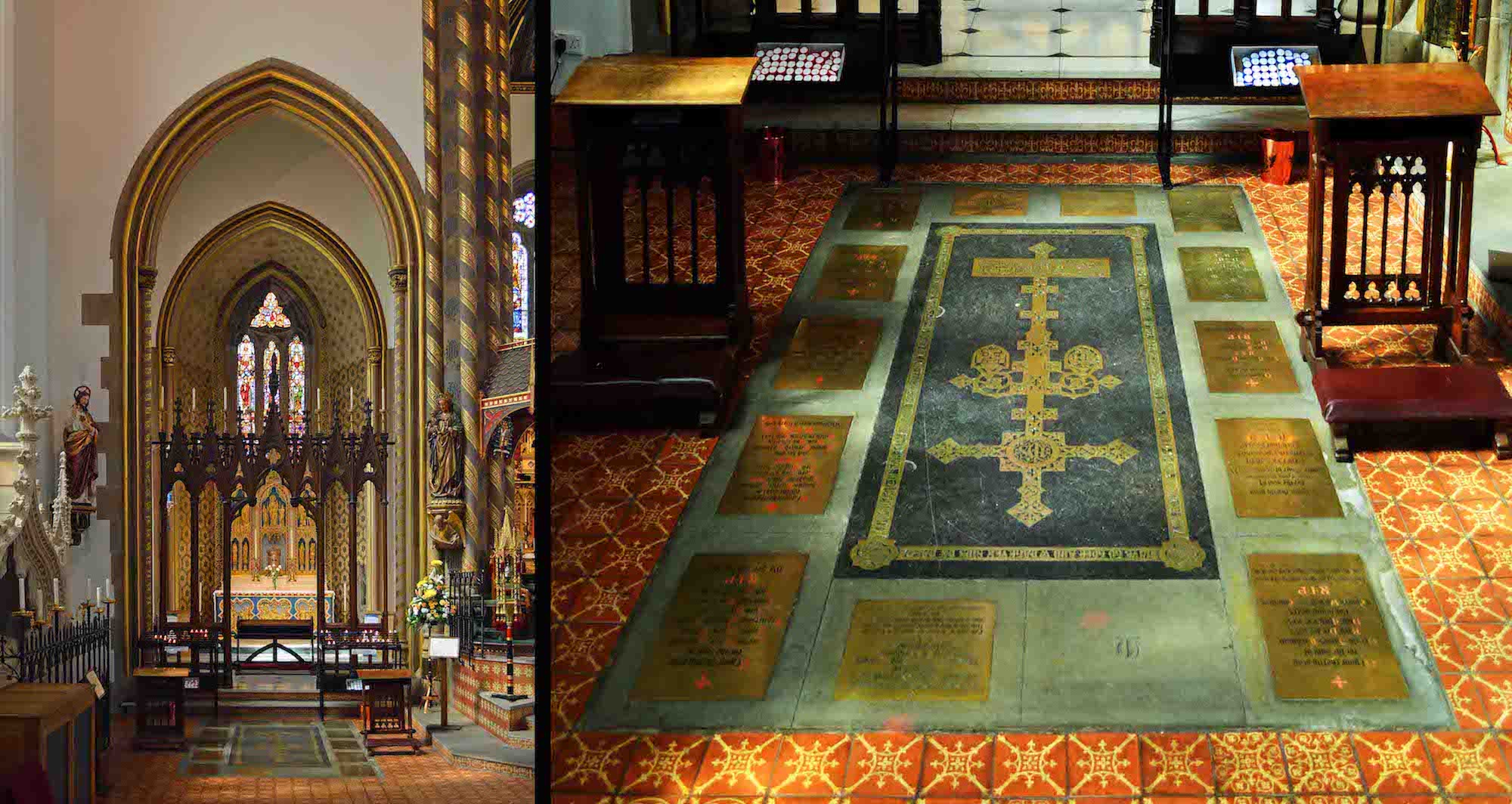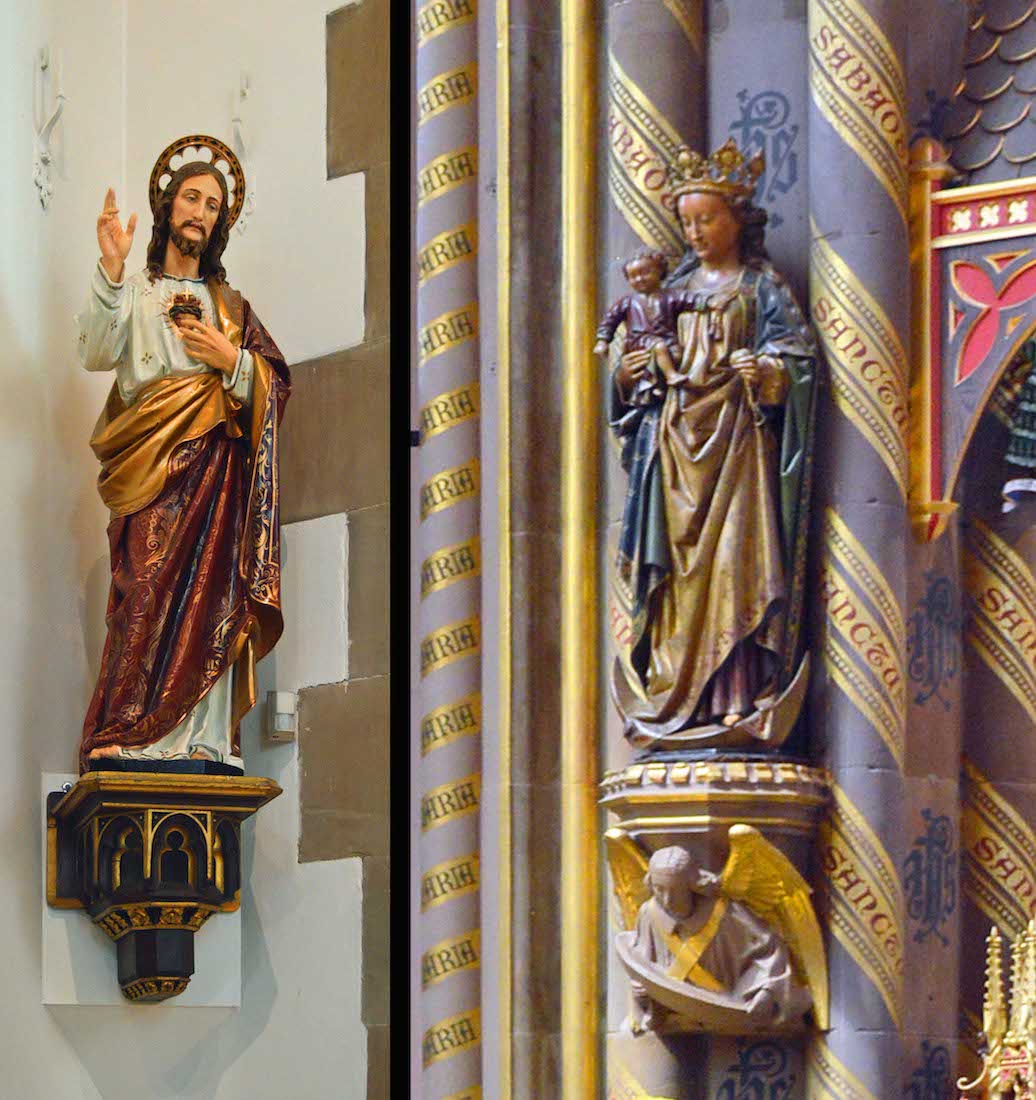21. ST EDWARD CHAPEL, EAST WALL
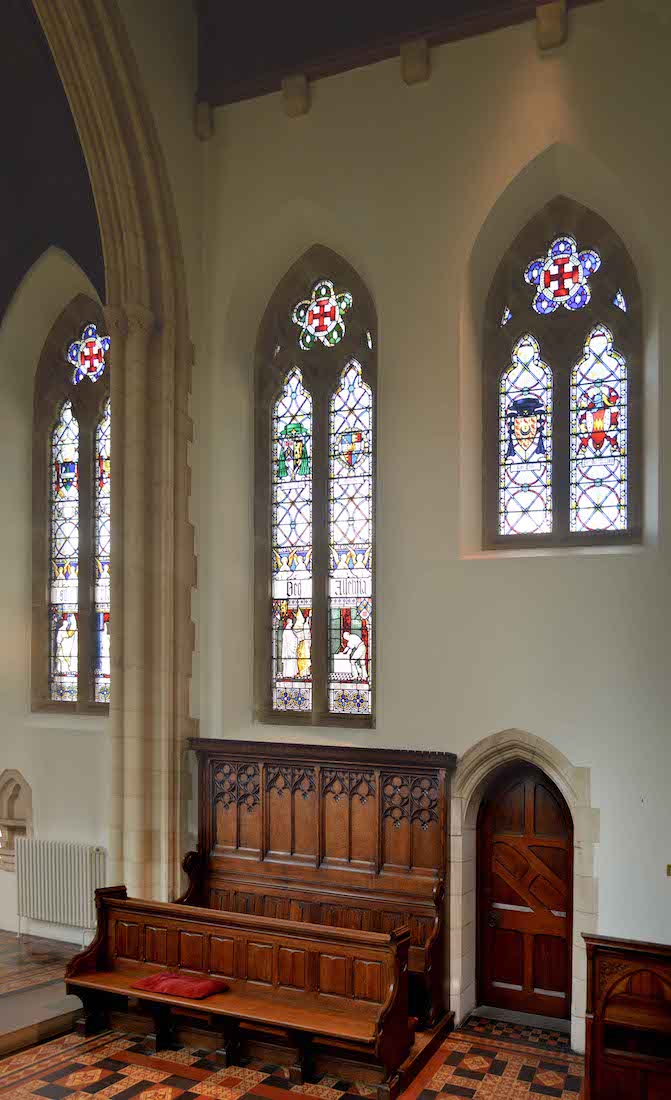
Along the Eastern wall of the Chapel are two full-sized windows, and a shorter window above an exit door from the Chapel. There is also a further set of seating. INDEX
22. CHAPEL EAST WINDOWS
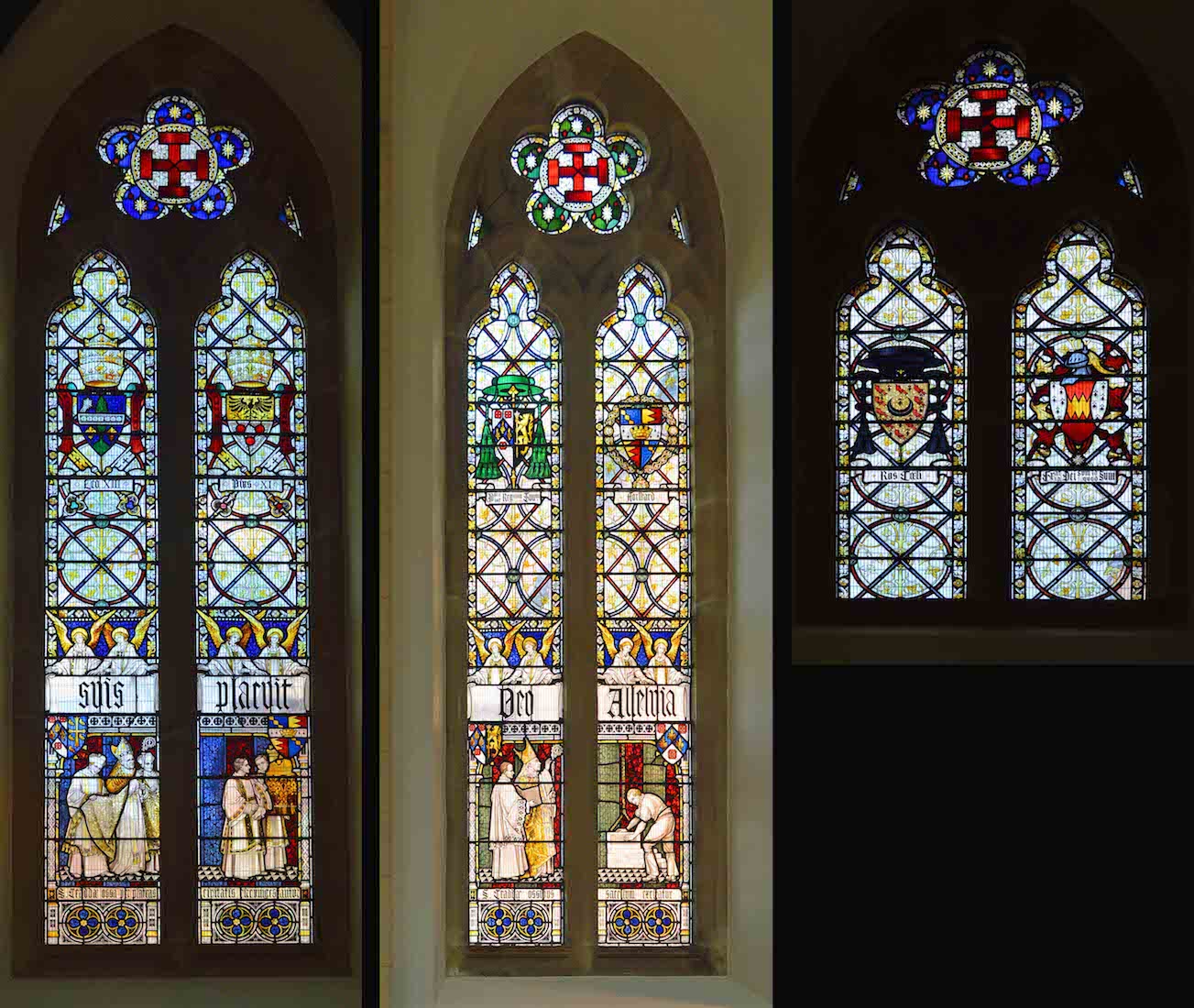
The large windows show Archbishop Ilsley presiding at the Procession of the Relics in 1919, and Archbishop Williams laying the foundation stone of the Chapel in 1931, assisted by Father (later Cardinal) Bernard Griffin. The windows contain the family coats of arms of the religious and distinguished laymen who helped with the building of the Cathedral. The small window at right has the text of 1 Cor 10:15 : ‘By God’s grace I am what I am.’
23. EMPTY NICHE?
As we prepare to leave the Chapel of St Edward, we pass an empty niche on our left. The four lower symbols of angel, lion, bull and eagle represent the Four Evangelists Matthew, Mark, Luke and John. The placing of the seven stars suggests that perhaps a statue of the Virgin Mary once stood here?
24. NORTH NAVE AISLE
We leave St Edward’s Chapel and find ourselves looking down the North nave aisle. In the distance is the Lady Chapel. To our left are three large windows, the first being of clear glass. Stations of the Cross line this wall, and there are doors to two confessionals.
25. NORTH NAVE WINDOWS
These are the two stained glass windows on the North wall. From left they show St Luke, St Andrew of Crete, St Francis, and St Thomas. The window at left was donated by glaziers working for the firm of John Hardman, Pugin’s close collaborator. Panels at the base show craftsmen engraving the glass for the panels directly above.
26. STATIONS OF THE CROSS
These beautiful Stations of the Cross were carved in 1875 by Albrecht de Vriendt of Antwerp, with the faces and dress in European style which is very unusual. The most holy people in the Stations are shown with a halo around their head. Shown here from right are Stations II to VI. The Stations are used as an aid to meditation and reflection, especially during the Easter period.
27. SOUTH NAVE AND PLAQUE
Looking across to the South nave, we see a further clear window and a pair of stained glass windows on the nave wall. There are further Stations of the Cross and also an interesting plaque. It reads: The spire on the south eastern [South Western] tower of this Cathedral Church was erected in the year of our Lord 1856, at a cost of £530 in memory of the Very Reverend John Canon Moore DD by the Catholics of the town and diocese. His body is buried in the crypt of this Cathedral.
28. SOUTH NAVE WINDOWS
The window at left is the War Memorial Window by John Hardman & Co. It was dedicated on Armistice Day, 1921 and restored in 2000. This window honours the men of the cathedral parish who were killed in the First World War. Panels at the bottom of the window show a priest offering Mass for the souls of the departed. The server is ‘a likeness of a Cathedral altar boy who was killed at the Front’ – a particularly poignant touch. The window at right is the Wareing window (1850). It shows St George and the Virgin and Child above scenes of the death of George Wareing, and his devout family.
29. THE PEWS
The pews were designed in 1940 by G. B. Cox. The ends all have different carvings of coats of arms of the Popes and English Bishops of the time, making an interesting and varied collecIon. The pews are made from Japanese oak.
30. ST CHAD STATUE
On the Southeast column of the nave is this 16th century statue of St Chad with 19th century carved oak canopy by Joseph Pippet of Hardmans. Shown here with his crozier, he is holding a model of the Cathedral of St Chad in Lichfield. This is the only English cathedral to have three spires. St Chad is the patron saint of this Archdiocese. His feast day is 2nd March. Notice the war memorial on the nave wall behind at left.
31. WAR MEMORIAL
Just below the War Memorial Window is a shrine designed by Gerald Hardman. This has a carving showing Christ's body being received by the Virgin Mary after the crucifixion. Inside the memorial is a Roll of Honour for the 200 men commemorated here, along with mementoes of many of them, including rosaries, badges and photographs. Window and shrine together make a touching memorial for the dead, within their own Cathedral.
32. TO THE CHAPEL OF THE OILS
Standing at the East end of the nave we look North across to the Chapel of the Oils. The dark pulpit is to our right, and standing in front of the glass doors to the chapel is the baptismal font. Interestingly, the chapel was originally the baptistry. We shall find the wooden casket in due course ... .
33. PULPIT
The pulpit is a stunning example of the craftsmanship of the carver and his dedication to detail. This is a mediaeval piece of work and depicts four so-called doctors of the Church – those whose contribution has been very significant in making the Church what it is today. Shown are St Jerome who translated the Bible into Latin; St Gregory the Great – Apostle of England; St AugusIne of Hippo – moral theologian; and St Ambrose who was a preacher and teacher. The pulpit was gifted to the Cathedral by John Talbot, the 16th Earl of Shrewsbury and owner of Alton Castle.
34. FONT AND FIGURE
Directly North from the pulpit is the Chapel of the Oils, behind closed glass doors. Immediately in front of the doors is this octagonal font designed by Pugin. It is not elaborate but has four carvings representing the four Evangelists. The carvings show the symbols: the angel (Matthew), the lion (Mark), the bull (Luke) and the eagle (John). High to the right of the Chapel door is a canopied niche containing an unnamed bishop / saint.
36. CHAPEL NORTH VIEW
Further stained glass windows face to the North and East, and behind the low Eastern wall is a descending access way. In the corner stands a golden lectern, and near it on a carved chest, an impressive tabernacle.
37. NORTH TRANSEPT
Just East of the Chapel of the Oils is the North transept. The Immaculate Conception window in this transept, designed by John Hardman Powell, Pugin’s son-in-law, was made and given by Hardmans in memory of John Hardman. A monument sits at the base of the window. We shall shortly walk across this transept to gain access to the Lady Chapel.
38. BISHOP WALSH MONUMENT
Bishop Walsh (1776-1849), shown here in ‘pontificals, with crozier and mitre’, was responsible for commissioning this Cathedral. He had taken a personal and paternal interest in the young architect, sometimes calling him ‘Bishop Pugin’. He had once written to Shrewsbury, ‘I consider him to be an extraordinary genius raised up for these times’. The design of the monument is widely attributed to Pugin, and its execution to George Myers, in 1850. The central roundel of its patterned backing shows a little figure of the bishop bearing a model of the Cathedral.
39. TO THE LADY CHAPEL
We now approach the ornate Lady Chapel. A figure of the Sacred Heart stands to the left of the entry, and a statue of the Virgin with the Infant Jesus to the right. On the floor is a large rectangular slab with thirteen memorial brass plates, with the names and dates of members of the Hardman family who are buried in the crypt below.
40. SACRED HEART, AND VIRGIN AND CHILD
By the entrance to the Chapel we have at left the figure of the Sacred Heart. The devotion to the Sacred Heart is one of the most widely practiced and well-known Roman Catholic devotions, taking Jesus Christ’s physical heart as the representation of his divine love for humanity. At right is a 15th century statue of the Virgin and Child given by Pugin.


